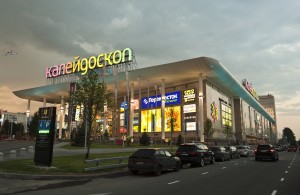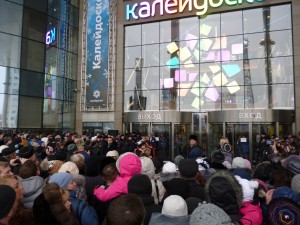Reconception - Rethinking Rebranding
I was intrigued when recently asked to provide a conference talk in Moscow on the Reconception of shopping centres. To a UK consultant the word Reconception was a bit strange as it is not a term in general usage in English.
Research showed its use was limited to the English theatre where historic dramas were ‘reconceived’ for new productions to modern day audiences.
But then I thought ‘Reconception’ was actually a very good description for taking an original concept such as a shopping centre and rethinking how it could be made relevant for new audiences and aspirations!
Certainly rebranding is potentially a dangerous description although now a ubiquitous term for updating any organisation and offer.
A lipstick? No, thanks. Leave it to the monkeys!
Rebranding like branding still means for many a new updated logo and simply visual signature change – the classing ‘packaging’ approach to branding and with it the danger of cosmetic change of image to the same old content.
‘Lipstick on a gorilla’ has been a well used cliché when describing the dangers of seeing branding or rebranding as an attempt to disguise a basically inappropriate out of date offer.
Managements now better understand that new looks need to be a signal for changed behaviours and a new added value offer. But too often the relatively easy image fix is seen as he priority activity. It can be an excuse to avoid addressing more difficult fundamental issues in the operation to achieve the reputation that creates optimum brand equity.
The term ‘Reconception’ however, avoids the potential trap concentrating on simply image issues. The ‘re’ prefix is all about renewing, rethinking, refreshing and readdressing challenges and opportunities.
‘Conception’ represents new ideas and strategies to achieve the desired reprofiling and repositioning to regain or maintain positive market differentiation in relation to the competition. Competition for shoppers is not now about simply competing with other shopping centres.
…The internet is changing the way people shop and what they want from any experience. Developing markets typically move through the initial phases of satisfying consumers previously lacking choice and latest retailer offers and formats to the competitive realities of developed markets where consuming ‘simply stuff’ has moved to an increased demand for enjoying different experiences.
What should we be really aiming for
The truth is that the centres have ceased to be simply ‘trade centres’ to becoming place destinations – where people go to socialise, be entertained, excited, inspired. As new community hubs, they are lifestyle and culture venues for a wide range of audiences and activities offering ideally now a 24/7 facility!
Here is an example of our recent shopping centre development in Moscow – Kaleidoscope Shopping Centre which due to its added offers for customers became a special Moscow destination on its own.
While Kaleidoscope was built from scratch, it can be a good example of a benchmark to aim for for those re-concepting their current centres.
Existing centres built in less demanding times need to rethink how they can compete effectively to maximize their capital value and returns for all stakeholders i.e. the tenants, investors, managements, and partners. This comes back to the need to attracting a loyal customer and visitor who now have an increasingly wider range of choices in how they spend their time and money.
As a result of making shopping centres destinations for not shopping only, but for events and different activities, nowadays centres must now be part of the customer social media experience. The aim is not to use this to directly sell and advertise, but to achieve and maintain a positive dialogue/conversation listening to and inspiring with new ideas and concepts that will encourage customer engagement.
It’s a tough challenge, but in reconceiving how a centre can be a first choice for target customers and visitors there has to be a clear strategy of what tenant offers and profiles will attract repeat visits and which facilities and activities need to be provided.
Do not rebrand, reconcept!
Any reconception needs a clearly defined distinctive brand vision to ensure every message, concept and activity are clearly aligned to achieve a real synergy of approach across all marketing media, physical environments and, importantly, the centre management and staff. The latter is a key factor – the best centre staff can be the decisive factor in creating a satisfying visitor experience and perception.
So maybe we need to readdress the term rebranding???! Substituting RECONCEPTION as the new buzz word to better explain that changing an image and profile required a holistic approach involving the centre’s profile, its special sense of place, its products, experience and its people.
Reconception demands commercial acumen, market awareness and creativity – focusing investment where it counts. As branding and design consultants, our mantra is intelligent asset management. Perhaps we now need to add ‘reconception’ to the English property sector vocabulary. The analogy of reconceiving centres as responsive theatres providing new productions for new audiences would seem a good starting point.






